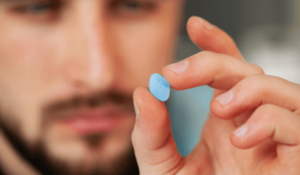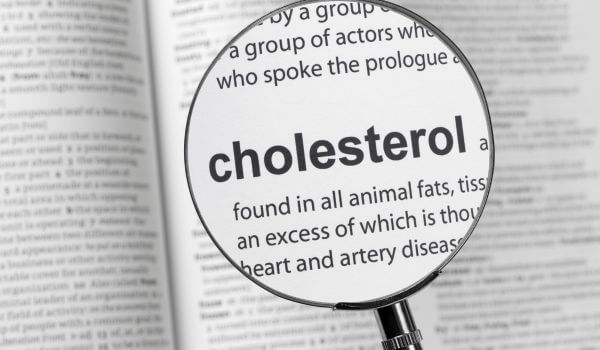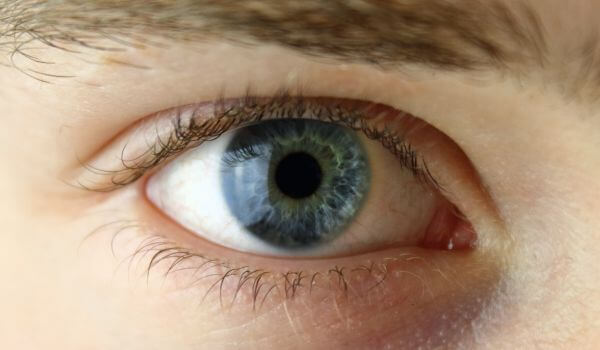 Was it pure luck or a case of players keeping their eye on the ball? Often, sports fans will spend hours happily dissecting an unexpected result in which the team came from behind and snatched victory from the jaws of defeat. This isn’t such a dramatic story, but it’s worth telling. The series of events that led to the creation of Viagra has some valuable lessons that can lead to understanding some of the more recent changes in the pharmaceutical world. We recently wrote a blog about a similar case in which the use of new drugs produced unforeseen and beneficial effects in a different area of medicine – the wonderful tale of Ozempic, Mounjaro, and weight loss.
Was it pure luck or a case of players keeping their eye on the ball? Often, sports fans will spend hours happily dissecting an unexpected result in which the team came from behind and snatched victory from the jaws of defeat. This isn’t such a dramatic story, but it’s worth telling. The series of events that led to the creation of Viagra has some valuable lessons that can lead to understanding some of the more recent changes in the pharmaceutical world. We recently wrote a blog about a similar case in which the use of new drugs produced unforeseen and beneficial effects in a different area of medicine – the wonderful tale of Ozempic, Mounjaro, and weight loss.
To better understand the sequence of events that led to the creation of Viagra, it’s good to understand the “standard practice” that companies developing new medications have to go through before they can launch any new drug on the market.
The path from concept to market
The journey of a new medication from a laboratory concept to a product on the pharmacy’s shelves is a complex process that only sometimes reaches the intended destination. Barely one in ten ideas make it all the way through from concept to market. The process requires a blend of scientific innovation, rigorous testing, and regulatory scrutiny to ensure that any new drug is safe and effective for public use.
Step 1 – Research and discovery
Scientists start to work on understanding diseases at a molecular level. This involves identifying potential targets for treatment – like a specific protein involved in a disease process. Nowadays, artificial intelligence (AI) plays a significant role in the opening phase. AI can analyze vast amounts of data to predict which compounds might effectively interact with a specified target, significantly speeding up the discovery process.
Step 2. Synthesis and laboratory testing
Once a promising compound is identified, it is synthesized and subjected to preclinical testing. This involves a series of experiments, often conducted in test tubes (in vitro) and on animal models (in vivo), to evaluate the drug’s safety and effectiveness. Scientists study how the compound behaves in the body, its toxicity levels, and its potential side effects. The goal here is to gather enough preliminary evidence to justify human trials.
Step 3. Clinical trials
Clinical trials are conducted in several phases:
- Phase I tests the drug on a small group of volunteers who enjoy good health to assess its safety, tolerability, and pharmacokinetics – how the drug is absorbed, distributed, metabolized, and excreted in the body. Whether it actually does the job intended is of secondary concern.
- Phase II shifts the focus to efficacy. Trials involve patients with the condition the drug is meant to treat. These trials also help determine the optimal dosing and further assess safety.
- Phase III is on a larger patient group, including double-blind tests of the drug against a placebo. This phase has to confirm the drug’s effectiveness, monitor side effects, compare it to other commonly used treatments for the same condition, and collect information that will allow the drug to be used safely.
Step 4. FDA approval
Only after successful phase III clinical trials can a drug developer submit a New Drug Application (NDA) to the FDA, the only agency that can approve medications for sale in the US. The NDA includes all the data from preclinical and clinical trials, with information on how the drug behaves in the body, manufacturing details, and proposed labeling. The FDA thoroughly reviews this data to ensure the drug is safe and effective for its intended use. They may also inspect the facilities where the drug will be manufactured.
Step 5. Home run!
Once the FDA approves the drug, it can be marketed and sold. In most cases, the approved drug is patented, which gives the developer exclusive rights to sell the drug for a certain period, which allows them to recover the significant investment made during the drug development process.
Even after a drug is released, it is subject to post-market surveillance involving ongoing monitoring for any long-term or rare side effects that may not have been apparent in clinical trials. Healthcare professionals and patients can report any adverse reactions to the FDA, which may lead to further studies or changes in how the drug is used.
How Viagra came into the game
Viagra is an exciting example of how unexpected turns in the long road of drug development don’t always mean that the time spent was wasted as long as scientific knowledge, rigorous testing, strategic marketing, and pure good fortune are on your side.
Step 1. The creation of Viagra
The tale of the creation of Viagra begins in the late 1980s when scientists in the UK labs of drug giant Pfizer were researching ways to treat hypertension and cardiovascular problems like angina, which is caused by reduced blood flow to the heart muscles. They were investigating a compound called sildenafil, which they hoped would work as a vasodilator by blocking phosphodiesterase 5 (PDE-5). PDE-5 has a role in the degradation of cGMP, which relaxes smooth muscle tissues. Relaxation of vascular smooth muscles in blood vessels leads to vasodilation. So, the theory was that with lower levels of PDE-5 available in the body, the effect would be increased blood flow through vasodilation thanks to increased availability of cGMP.
Step 2. Finding out that sildenafil doesn’t do what it was thought to do
Sildenafil was synthesized and underwent preclinical testing in animal studies to determine its safety and effectiveness in cardiovascular diseases. These tests were meant to outline sildenafil’s pharmacodynamics (how it affects the body) and pharmacokinetics (how the body interacts with administered substances for the entire duration of exposure.) In animal tests, it impeded the expression of the PDE-5 enzyme as expected, and there weren’t any apparent adverse effects on the animals being injected.
So, by the early 1990s, a phase I clinical trial was started to test how humans tolerated this new compound. This marked the pivotal turn in sildenafil’s destiny. During trials, which were primarily focused on the safety of the recipients, something unexpected was observed. Nurses who were tasked with carefully monitoring the small group of healthy men after they had received a dose of sildenafil by injection saw something unusual. The men were supposed to remain supine for several hours, at least until the drug developers could be sure that there were no dangerous after-effects. When the nurses went from bed to bed to take temperature and blood pressure measurements and get feedback on how the men felt, they noticed something strange – many were lying on their stomachs. They were reluctant to stand up in the flimsy gowns that are standard issues for subjects in such trials.
Careful questioning revealed the cause of this unusual behavior – most of the men were getting firm erections. They were too embarrassed to lie on their back or stand up! The scientists’ quick bout of lateral thinking put two and two together. Sildenafil is a vasodilator, which relaxes the walls of blood vessels to allow blood flow more easily through narrowed channels in clinical conditions like hypertension and angina. But the process of erection of the penis also involves changes in blood flow, which is necessary for the two main chambers of the penis to fill up with blood and so stiffen the shaft.
It became clear to the scientists at the Pfizer labs that the suppression of PDE-5 by sildenafil has another effect which is to relax the cavernosal smooth muscle in the penis. With the relaxation of the smooth muscles in the arterial walls of the main blood supply to the penis, the inflow of blood increases, the chambers distend with blood, and veins that lead blood away are compressed. The more blood comes into the cavities, the greater the pressure, and so the penis achieves full rigidity.
Step 3. Clinical trials and observation of sildenafil’s effects on men with ED
Realizing the potential for a breakthrough in a completely different therapeutic area, Pfizer quickly shifted its focus to test what would, in time, become known as the “potency pill.”
They moved into Phase II, specifically targeting sildenafil’s ability to correct erectile dysfunction. These trials were conducted on men who had reported difficulty in achieving and sustaining an erection, and the results confirmed sildenafil’s effectiveness in improving erectile function. It marked a significant advancement in ED treatment, which until then had limited options like injections of Alprostadil or invasive surgical implants.
Phase III testing and FDA approval of sildenafil for treatment of erectile dysfunction
In 1998, after comprehensive phase III clinical trials, Pfizer received FDA approval for sildenafil as a treatment for erectile dysfunction. The now iconic diamond-shaped “little blue pill” labeled Viagra quickly became immensely popular, generating hundreds of millions of dollars of revenue for Pfizer.
This approval marked a historic moment, as Viagra was the first oral treatment approved for ED, a condition that until then wasn’t openly discussed both because of the implications that came if a man had to admit that he wasn’t functioning as he should, and for the lack of treatment options.
The story of the creation of Viagra hit the headlines with a bang!
The creation of Viagra was launched was followed by one of the most successful direct marketing campaigns in pharmaceutical history. Pfizer’s strategy effectively normalized the conversation around erectile dysfunction, making it less taboo.
Several other treatments for ED that rely on the effect of blocking PDE-5 have also come to market since the creation of Viagra. There has been nothing especially new in these drugs, and it was not until October 2023 that a product that addresses erectile function in a completely different way came into view. Eroxon Stimgel is a new ED solution that works completely differently from previous PDE5i treatments. Eroxon is a topical gel, which means that almost all of the harmful potential side effects that oral medications like Viagra and its competitors have to warn against are absent. It also addresses the cause of ED in a much simpler way, working in a manner that builds on a natural reaction in the penis to sudden cold rather than interfering with chemical pathways and metabolic processes in the same way that sildenafil does.
















